Seeds included in 'Flowers | Temperate Climate | Summer 2023' Seed Subscription:
 |
Aster- Hulk (Callistephus chinensis)Bushy annual, 60cm high with unique cream to yellow flowers resembling 'fried eggs'. Ideal for commercial cut flower growers, blooming from late spring to autumn. Suitable for beds, borders, and containers. Easy to grow. Also known as 'China Aster'. |
 |
Zinnia- Mazurkia (Zinnia elegans)Annual grows to 30cm, with large, cream-tipped scarlet flowers up to 8cm wide. Mostly double/semi-double flowers. Ideal for beds, borders, mass plantings. Easy to grow in large containers. Fleuroselect award winner. |
 |
Sunflower- Double Delight F1 (Helianthus annuus)An annual growing to 75cm with multiple stems and flowers per plant. The bright yellow pollen-free flowers are semi-double, giving them a fluffy appearance. Fast and easy to grow. This medium-height variety is suited to growing in large pots, garden beds. |
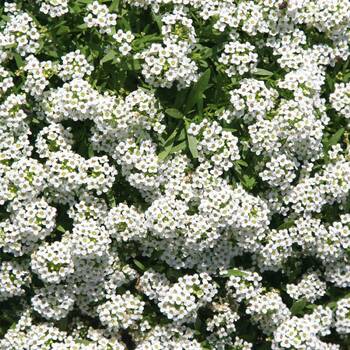 |
Alyssum- Carpet of Snow (Lobularia maritima)Annual growing to 12cm. Low growing plant that produces masses of small fragrant pure white flowers. Ideal for carpeting. Good for beds, rockeries, paths and edging. Also known as "Sweet Alice". |
 |
Nasturtium- Alaska Mixed (Tropaeolum majus)Annual growing to 40cm. Marbled variegated foliage. Flowers in a mix of colours. Good for beds, borders, rockeries, containers and hanging baskets. |
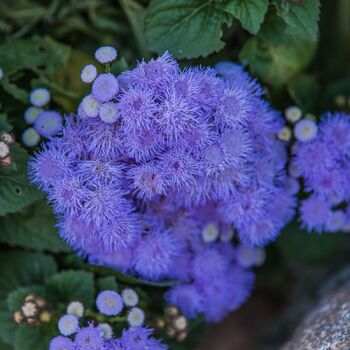 |
Ageratum- Market Growers Blue (Ageratum houstonianum)Annual plant growing to 50cm with dark green leaves and small blue-purple flowers. Ideal for cutting, suitable for beds, borders, pathways, rockeries, and containers. Easy to grow from seed, long flowering period. Attracts butterflies. |
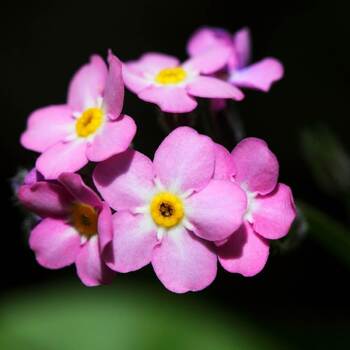 |
Forget Me Not- Rose Pink (Myosotis sylvatica)Biennial plant growing to 30cm with green leaves, small rose pink flowers. Ideal for borders, meadows, woodlands, containers, and as cut flowers. Tolerates most soils and positions. Self-sows freely, attracting bees and butterflies. |
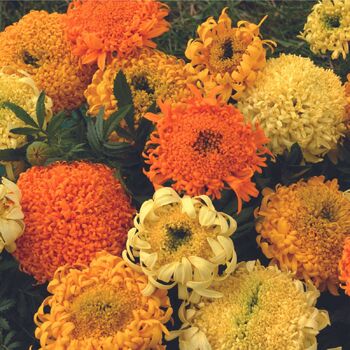 |
Marigold, African- Yummy Mummy (Tagetes erecta)Compact annual growing to 30cm with dark green leaves and ornate flowers. Blooms from summer to autumn in yellow, orange, and gold. Suited for mass planting, borders, or containers. Attracts pollinators. Edible flowers. Fast and easy to grow. |
 |
Petunia- Karkulka (Petunia x hybrida)Annual up to 30cm. Large, ornamental flowers with ruffled edges in white and bubblegum pink. Plants spread with 6cm flowers blooming in summer. Ideal for mass planting, beds, borders, containers. Best in wind-sheltered positions. |
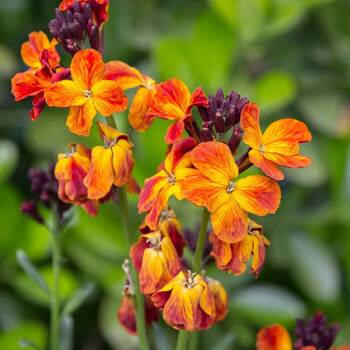 |
Wallflower- Fire King (Erysimum cheiri)Evergreen perennial normally grown as a biennial. Grows to 45cm. Dark green foliage with bright orange/red flowers. Sweet fragrance. Good for rock gardens, beds, borders and along walls and fences. Makes an eye-catching cut flower. |
Summer Gardening
Tips for gardening in summer:
- Watering: Learn when to water by using your index finger to check soil moisture. Scratch back a little of the surface soil and use your finger to see if soil is moist about 5cm below the surface; if it’s on the dry side, it’s time to water. Learn more here.
- Pinch for More Flowers: Pinch the main stems of flowering plants to encourage strong growth, a bushier habit and more flowers. Once plants are 20-40cm tall and have several sets of leaves, use sharp, clean snips or secateurs to cut off the top 10cm or so of the main stem of the plant, making the cut just above a set of leaves. Flowers including aster, zinnia, chrysanthemum, calendula, marigold and dahlia will all benefit from pinching. Learn more here.
Pests and diseases to look out for in summer:
- Aphids: Small, sap-sucking insects that congregate on the new shoots or the underside of leaves. They can cause leaves to wilt or become discoloured, and also excrete honeydew which can attract ants and other insect pests. To manage aphids, remove them by spraying with a garden hose, apply a soap or alcohol spray, or encourage predatory insects to your garden. Learn more.
- Whitefly: A sap-sucking insect related to aphids, whitefly are found in large numbers on the underside of leaves, and will swarm in clouds when disturbed. Plants may have yellowing leaves or may wilt, and growth will be slowed. Whitefly can be removed with a Graden hose or strayed with soap spray. Badly affected plants should be destroyed. Learn more.
- Fungal diseases: The combination of warm temperatures and summer humidity can form the perfect conditions for fungal diseases to spread. Water plants in the morning at ground level, avoiding wetting foliage wherever possible. Prune off affected foliage, space plants to allow more airflow, and treat fungal outbreaks with homemade or purchased sprays.
